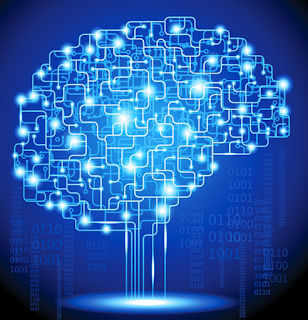Quantum computing is now a commercial reality !
Quantum Computing
Quantum computing is the area of study focused on developing computer technology based on the principles of quantum theory, which explains the nature and behavior of energy and matter on the quantum (atomic and subatomic) level. The quantum computer, following the laws of quantum physics, would gain enormous processing power through the ability to be in multiple states, and to perform tasks using all possible permutations simultaneously. Current centers of research in quantum computing include MIT, IBM, Oxford University, and the Los Alamos National Laboratory. D-Wave Systems is the world’s first quantum-computing company.The Quantum computer, by contrast, can work with a two-mode logic gate: XOR and a mode we'll call QO1 (the ability to change 0 into a superposition of 0 and 1, a logic gate which cannot exist in classical computing). In a quantum computer, a number of elemental particles such as electrons or photons can be used (in practice, success has also been achieved with ions), with either their charge or polarization acting as a representation of 0 and/or 1. Each of these particles is known as a quantum bit, or qubit, the nature and behavior of these particles form the basis of quantum computing. The two most relevant aspects of quantum physics are the principles of superposition and entanglement.
What Commercial Applications are Being Adopted?
It appears that while this is going to expand rapidly that current commercial applications are fairly narrow.Lockheed Martin
In 2010 Lockheed became D-Wave’s first commercial customer after testing whether (now 7 year old) Quantum computers could spot errors in complex code. Even that far back D-Waves earliest machine found the errors in six weeks compared to the many man-months Lockheed Martin’s best engineers had required.Today, after having upgraded twice to D-Waves newest largest machines Lockheed has several applications, but chief among them is instantly debugging millions of lines of code.
Temporal Defense Systems (TDS)
TDS is using the latest D-Wave 2000Q to build its advanced cyber security system, the Quantum Security Model. According to James Burrell, TDS Chief Technology Officer and former FBI Deputy Assistant Director this new system will be a wholly new level with real-time security level rating, device-to-device authentication, identification of long-term persistent threats, and detection and prevention of insider threats before network compromise and data theft occurs.Westpac, Commonwealth, and Telstra
While the Australians are committed to getting out ahead their approach has been a little different. Commonwealth recently announced a large investment in a Quantum simulator, while Westpac and Telstra have made sizable ownership investments in Quantum computing companies focused on cyber security.QuantumX
There is now even an incubator focusing solely on Quantum computing applications called QuantumX with offices in Cambridge and San Francisco.As for operational business uses these applications are not overwhelmingly diverse but this harkens back to about 2005 when Google was using the first NoSQL DB to improve its internal search algorithms. Only two years later the world had Hadoop.
Quantum Computing and Deep Learning
Here’s where it gets interesting. All these anomaly detecting cybersecurity, IV&V, and Monte Carlo simulations are indeed part of data science, but what about deep learning? Can Quantum computing be repurposed to dramatically speed up Convolutional and Recurrent Neural Nets, and Adversarial and Reinforcement Learning with their multitude of hidden layers that just slows everything down? As it turns out, yes it can. And the results are quite amazing.
Quantum computers are made up of parts called qubits, also known as quantum bits. You may have read that IBM Q’s Quantum machine available in the cloud via API is 17 Qubits while D-Wave’s is now 2,000 Qubits. Does this mean IBM’s is tiny by comparison? Actually no. IBM and D-Wave use two completely different architectures in their machines so that their compute capability is roughly equal. D-Wave’s system is based on the concept of quantum annealing and uses a magnetic field to perform qubit operations.
IBM’s system if based on a ‘gate model’ which is considered both more advanced and more complicated. So when IBM moves from 16 qubits to 17 qubits its computational ability doubles.



Comments
Post a Comment